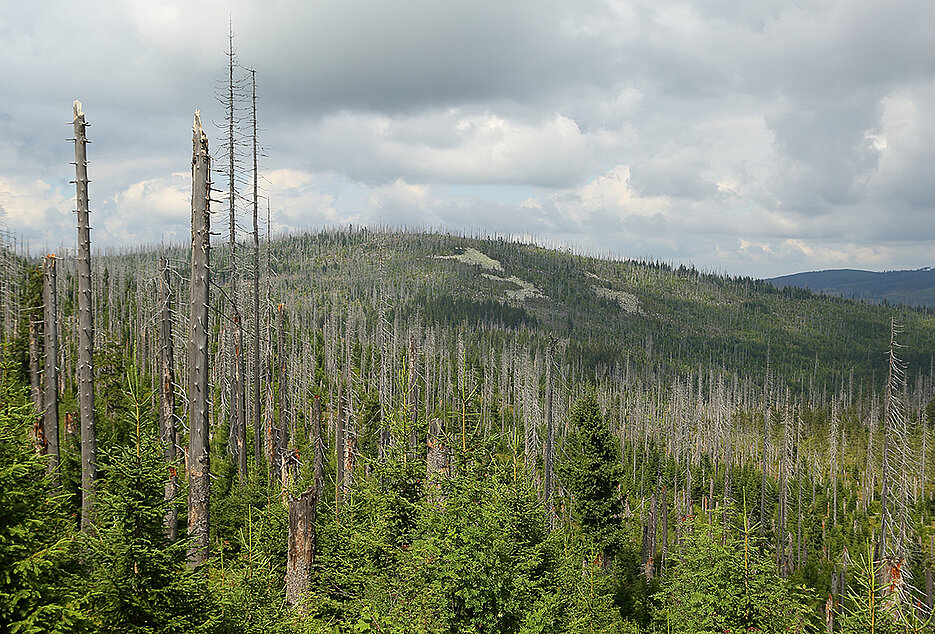Preventing Future Forest Diebacks
10/02/2019Removing dead trees from the forests and reforesting on a large scale: this is the German Federal Government's strategy against "Forest Dieback 2.0". Ecologists from the University of Würzburg call for other solutions.

Bark beetles, heat, drought, storms, and fires have damaged the German forests. Those who go for a walk there often encounter dead spruces and dried beech trees. "The forests are affected in all regions and need quick help," says the website of the German Federal Ministry of Food and Agriculture.
Clear and reforest: this is how the ministry imagines this help. Minister Julia Klöckner plans a large-scale clear-up followed by reforestation programme. At least 500 million euros are needed for the programme and subsequent maintenance.
Researchers call for a radical change
Clear-up and reforestation is not the right strategy, forest ecologists Simon Thorn, Joerg Mueller and Alexandro Leverkus from Julius-Maximilians-Universität (JMU) Würzburg in Bavaria, Germany, write in Science magazine. "This policy is likely to create extensive, even forest stands that remain particularly vulnerable to the impacts of future climate change," says Simon Thorn.
Germany should therefore reconsider its strategic and financial efforts to create forests resilient to future climate change. Here a radical change is necessary: The scientists suggest not to remove dead wood and not to conduct reforestation on large scales.
Preserving dead wood
For centuries, forestry has followed a clearing and reforestation strategy. The consequences: a steady decline in biological diversity and the extinction of many fungi and insects that depend on dead wood.
According to Thorn, large-scale clear-ups following natural disturbances have negative effects on the diversity of insects which are dependent on deadwood. This collides with the goals of the government’s coalition agreement, according to which the dramatic decline of insects should be halted. Instead, public subsidies should be aimed at preserving dead wood created by disturbances.
Safeguarding open forests
Natural disturbances such as storms, bark beetle outbreaks and drought create canopy gaps, which enable the regrowth of a wide variety of native tree species. According to the scientists, this increases the resistance of a forest to extreme weather events.
In contrast, rapid reforestation leads to dense groups of trees of the same age, which are highly susceptible to weather events and pests. Subsidies for forestry should better promote a diverse tree and age structure as well as the presence of canopy gaps. This strategy would simultaneously benefit economically important tree species and preserve endangered insects.
Forest Dieback 2.0
In the 1980s there was extensive forest damage in Central Europe, mainly caused by air pollution due to industry and traffic. At that time there was talk of "Waldsterben" or "Forest Dieback". The current catchword "Waldsterben 2.0" refers to this period. The addition "2.0" expresses that the current forest damage has other causes this time – namely climate change.
Publication
Preventing European forest diebacks. Simon Thorn, Jörg Müller, Alexandro B. Leverkus. Science, September 27, 2019. DOI: 10,1126/science.aaz3476
Contact person
Dr. Simon Thorn, Ecological Station, University of Würzburg, T +49 931 31-83057, simon.thorn@uni-wuerzburg.de
Weblinks
Ecological Field Station of the University of Würzburg
Federal Ministry of Agriculture: Sustainable forestry / in german language
Federal Government: Stop insect mortality / in german language









